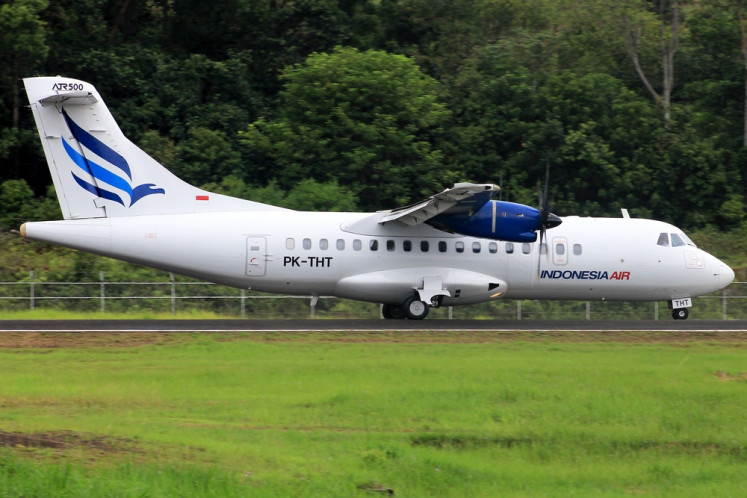Popular Reads
Top Results
Can't find what you're looking for?
View all search resultsPopular Reads
Top Results
Can't find what you're looking for?
View all search resultsRI lacks sanitary landfills as waste piles up
For the past few months, garbage trucks have been lining up to dump their waste at Bantar Gebang, the country’s largest landfill, located in Bekasi, West Java
Change text size
Gift Premium Articles
to Anyone
F
or the past few months, garbage trucks have been lining up to dump their waste at Bantar Gebang, the country’s largest landfill, located in Bekasi, West Java.
The line has been growing longer and longer since this year’s Ramadhan fasting month, which ended in July, as virtually all garbage from Jakarta ends up at the landfill, which is just an hour’s drive away from the capital and is the size of 120 football fields.
After lining up for more than 10 hours, the trucks finally dump their waste into towering mountains of trash, which have risen skyward as the capital grows bigger and wealthier. Some truck drivers have reportedly passed out while enduring the grueling waiting time.
In the past, trucks usually only had to wait for four hours before dumping their waste.
The line will only grow longer as the government predicts that Indonesia’s waste will grow from 64 million tons per year to 67.1 million tons per year by 2019.
“Assuming that our population will grow by 1.38 percent, our waste will reach 67.1 million tons by 2019, dominated by organic waste,” Environment and Forestry Minister Siti Nurbaya Bakar said.
Recent data from the Food and Agriculture Organization (FAO) revealed Indonesians’ penchant for throwing away their food.
According to the data, Indonesians waste 13 million tons of food every year, amounting to 52.3 tons per person. “This means that the waste could feed close to 11 percent of the population, or 27.5 million people, for a whole year, similar to the total number of people living below the poverty line,” FAO Indonesia representative Mark Smulders said.
Much of this ends up in open landfills, where garbage is left out in the open like in Bantar Gebang, or in nature or the oceans.
Although Bantar Gebang, which started operating in 1989, was designed to use sanitary landfill technologies, in practice, it is merely an open dumping site that has generated environmental problems such as air pollution, odor and groundwater pollution in surrounding areas.
Jakarta Health Agency data from 2000 showed that the acidity level of the water at Bantar Gebang had passed the safety level by 40 percent, while 95 percent of the water was contaminated by ecoli bacteria.
Furthermore, 99 percent of the residents of Bantar Gebang and its surrounding areas suffered from respiratory problems, with 34 percent of them suffering from TBC.
Siti said 69 percent of Indonesia’s waste ended up in open landfills, while only 7.5 percent was processed to limit its environmental impact. It is estimated that 5 to 10 percent of waste is either burned or buried.
She urged regional governments to immediately upgrade their landfills from open ones to sanitary ones.
Tuti Hendrawati Mintarsih, the ministry’s director general for dangerous and toxic material and waste management, said regional governments were mandated to phase out open landfills by 2013.
“According to the 2008 Waste Management Law, all landfills [in Indonesia] should be controlled landfills or sanitary landfills. But it’s difficult. If we fully enforce the law, then the prisons will be filled with regents,” she said.










